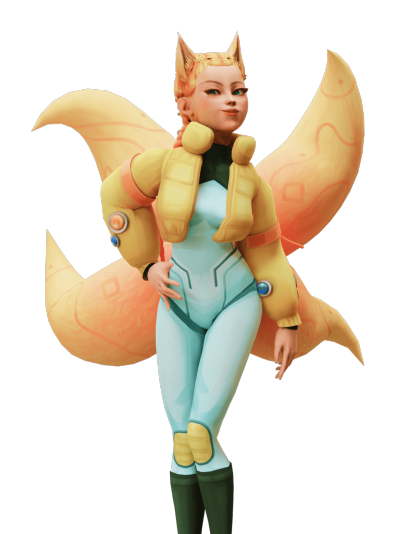The Complete Guide to 3D Product Photography Platforms

The aspect most likely to pull you in and spark your imagination when you visit a web-based company is the image. This is based on science, not just speculation. The majority of consumers (83%) cite product visuals as having the greatest influence on their choice to buy. These customers also anticipate seeing at least 8 photos on each product page. In other words, eCommerce websites require more photos of greater quality than previously.
These factors have led to the rise of 3D product photography platforms, also known as virtual product photography, as the best method for taking product images for both B2B and expanding enterprises.
Today’s comprehensive guide will provide you with everything you need to know about the 3D product photography platforms, as well as about their benefits, essential equipment, future, and much more. So let’s not waste time anymore and get to the point together right now!
What is a 3D Product Photography Platform?
eCommerce companies are increasingly using 3D product photography systems to provide the quantity and diversity of images required to pique the interest of their target audience.
However, what precisely is a 3D product photography software and how can it benefit your company?
In simple terms, it is a type of computer program that creates photorealistic 2D photographs from 3D models of actual products or their parts. We refer to it as a “3D product photography” platform as it can start to do for you what a difficult and expensive studio shoot for 3D photography can’t: create 3D photos of full objects.
The benefit of using a platform is that it uses 3D models and model components to create 2D photorealistic photos, augmented reality applications, and 3D configurations while keeping your assets organized and available. It is an expandable solution that you can add to and build upon as your business develops.
It’s vital to remember that a platform offers a tonne of versatility. With no additional work needed, a platform may use the same 3D models to create an interactive configurator for your website if your company decides it wants to provide customized or configurable items.
A buyer may visually place a product in their own environment by using augmented reality, which is another appealing feature. Nothing increases consumer confidence more. A platform is essential if you believe you could need either of these functionalities in the future.
The Evolution of Product Photography
Product photography has advanced significantly from the days of static photographs, becoming more dynamic and engaging. Simple product graphics that lacked depth and interaction were used to exhibit products in the early days of e-commerce. With the development of technology, 360-degree product photography became popular, enabling shoppers to examine things from numerous perspectives. This method improved the shopping experience by giving a more thorough view of the goods.
But the development of 3D product photography platforms has been the most recent advancement in this field. To provide dynamic and immersive visual experiences, these platforms make use of cutting-edge technology like 3D modeling and rendering. Customers may view items in 3D from all sides, zoom in for close-ups, and even interact with virtual reality or augmented reality elements. With this degree of involvement, buyers can connect with items in a more authentic and tactile way, bridging the gap between the physical and digital purchasing experiences.
Numerous advantages have resulted from the transition of product photography to 3D platforms. By providing a more dynamic and immersive experience, it improves consumer engagement and enables users to make more informed decisions about their purchases. Moreover, because buyers can thoroughly examine things, they become more confident and the chance of product returns decreases, which boosts conversion rates. Generally speaking, the development of product photography has changed how companies present their items online, giving buyers a more interesting and pleasurable purchasing experience.
Benefits of Using 3D Product Photography Platforms
Businesses aiming to improve their online presence and increase sales can gain a variety of advantages from the implementation of 3D product photography platforms. Two major benefits are as follows:
Enhanced Customer Experience
Platforms that enable interactive and immersive product visualizations, such as 3D product photography, improve the consumer experience. The tactile feeling of physical purchasing is replicated by allowing customers to rotate objects, zoom in for close-ups, and examine them from all angles. The chance of product returns is decreased because of this degree of participation, which also helps to create trust and boost confidence in purchase decisions.
Increased Conversion Rates
It has been demonstrated that using 3D product photography has a considerable influence on conversion rates. Businesses may more effectively convey the value proposition and differentiating qualities of their products to customers by giving them a thorough grasp of the product’s look and features. Platforms for 3D product photography’s interactive features encourage engagement and enthusiasm, which eventually persuades clients to make a purchase.
Essential Equipment for 3D Product Photography
To begin taking your own 360-degree product images, you’ll need a camera, a turntable, a few attachments, and some software.
- Camera: You may use a point-and-click camera, a smartphone, or a high-end SLR as your camera.
- Tripod or Another Camera Mount: Keep your camera steady by using a tripod or another camera mount.
- Remote Trigger: This will stop the camera from swaying when you press the shutter release.
- Lights: The finest possible lights will make your goods seem.
- Turntable: You manually spin some while using a computer to connect with the camera and rotate others. Then, the program that makes an image capture automatically rotates them.
- Photo Editing Software: For touch-up, tone, and cropping, use Adobe Lightroom or a program of a similar nature.
- 360-View Software: Utilize 360-view software to create a 360-degree picture from your photos.
Choosing the Right 3D Product Photography Platform
Although a platform for 3D product photography may not be appropriate for every business, it may be a game-changer for the right ones. A brand or B2B company would be a perfect candidate for this solution if they possessed the following traits and qualities. You should seriously consider including a platform on your roadmap as soon as possible if you can “yes” to any of the following:
- “My product portfolio is extensive and flexible.”
- “I must have the highest caliber product representation, as required by my sector or category.”
- “I want to make the most of the 3D models I already own.”
How Big Brands Utilize 3D Product Photography
Now, let’s have a closer look at the 2 most well-known case studies – Nike and IKEA:
Case Study: Nike

Nike, a market leader in athletic apparel and sportswear, has effectively incorporated 3D product photography to improve their online store and provide customers with an engaging shopping experience.
Nike has transformed the way they market their items by utilizing platforms for 3D product photography. Nike allows customers to digitally explore their products with unmatched depth and immersion with interactive 360-degree views, and the ability to zoom in and inspect items from different perspectives.
Utilizing augmented reality (AR) technology is one significant component of Nike’s strategy. Customers may virtually try on shoes or examine merchandise in real-world settings thanks to Nike’s integration of AR features into their mobile applications. Along with improving the client experience, this creative application of 3D product photography also helps allay worries about fit and fashion.
Nike also uses 3D product photography to show off the complex design features of their footwear and clothing. Products may be photographed in high-resolution 3D, highlighting the distinctive characteristics, textures, and materials utilized, giving clients a more thorough grasp of the product’s quality and craftsmanship.
Through the effective use of 3D product imagery, Nike has created a dynamic and interesting web catalog. Nike offers customers a level of product discovery that is unmatched in the industry and improves the buying experience as a whole by utilizing interactive 360-degree views, augmented reality, and high-resolution images. The relevance of using 3D product photography platforms in enhancing online retail and increasing consumer happiness in the current digital landscape is demonstrated by the case study.
Case Study: IKEA

IKEA made the decision to move away from using conventional photography in its catalog in favor of its present method, which mostly uses computer-generated graphics. Traditional photography was adequate in terms of quality but involved too much logistical work for the firm.
However, they also benefited further in terms of production. By using 3D models, they did not have to make and send prototype furniture to various locations across the world to be shot. Traditional photography required that everything be reshot if there were any alterations.
Because they vary greatly based on region, their kitchens were the hardest rooms to picture. For instance, the appearance of kitchens in Japan and Germany is very different from those in the United States. However, they avoided the requirement for actual photoshoots by adopting 3D product photography.
Currently, 75% of their photographs are created digitally, and they have 25,000 models that have been high-resolution rendered. As a result, IKEA can print them wherever they’re needed, even on the store’s big walls.
The Future of 3D Product Photography
Recently, 3D imagery has been stubbornly incorporated into commercial photography more and more, as this practice spreads throughout major sectors.
When photographing real estate, a person may walk around the property to record the inside, location, and all the features, and then the program processes the data to create a 3D visualization.
Leaders in several industries have already been overtaken by the emergence of computer-generated product visualization. With the help of extensive innovation, sectors like the design and production of furniture and furnishings have long been able to be flexible in their work.
Many of the steps that their complete manufacturing process travels through are invested in digitalization to increase operational success and value. Product photography required for marketing purposes, of course, is aware of this.
These days, it takes a lot more imagination to create engaging content. For instance, stunning product photography with motion, a dynamic feature of the scene, would unquestionably catch the attention of followers. Additionally, because social media platforms are being used for direct sales, we may find up-to-date, effective trends and methods there for brand presentation and advertising.
Conclusion
360 product photography platforms provide businesses with a potent tool to improve their online presence and increase client interaction. Businesses may enhance conversion rates by utilizing these platforms to exhibit their items from a variety of perspectives, offer a dynamic and engaging shopping experience, and more. The main advantages are a market advantage, increased consumer happiness, and greater product visualization.
Leveraging 3D product photography platforms is crucial for companies trying to stand out in a visually driven digital environment as e-commerce continues to flourish and customers demand more immersive experiences.















